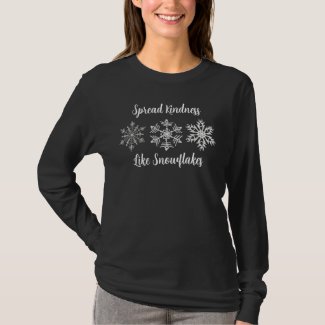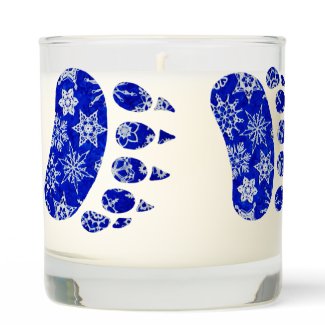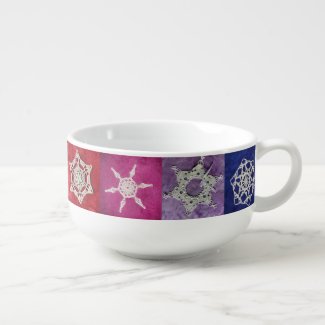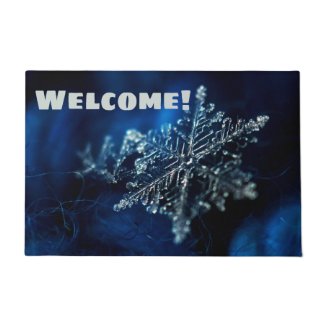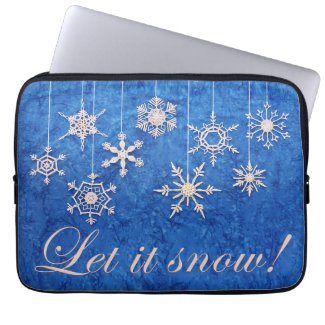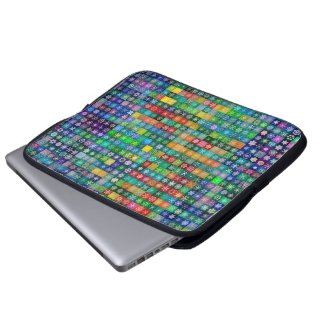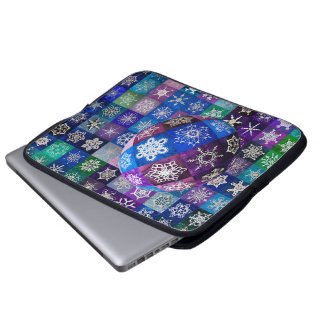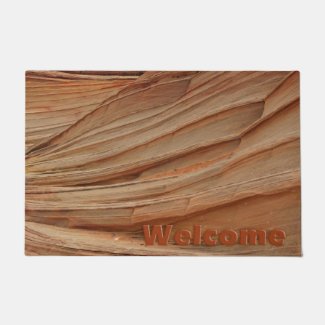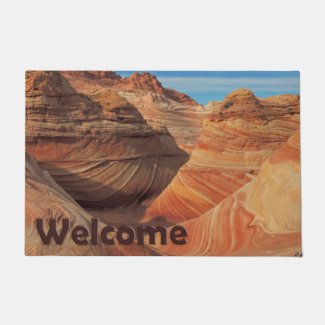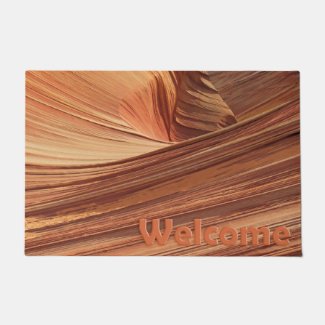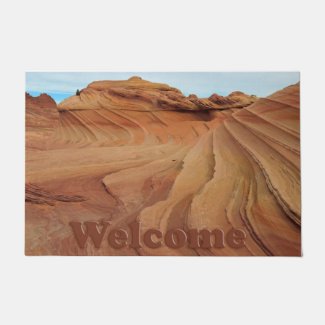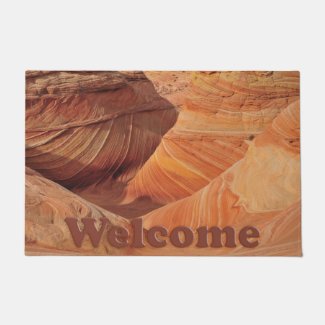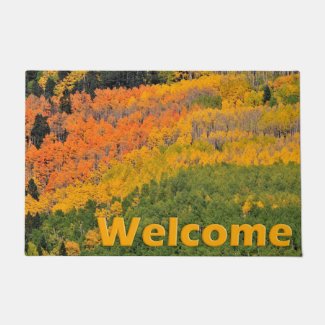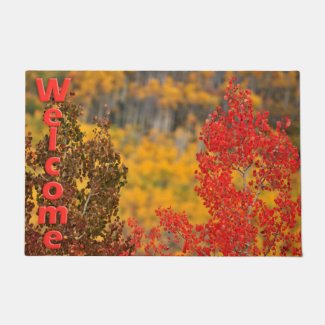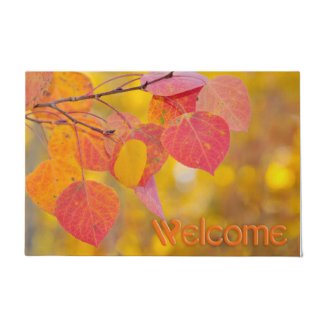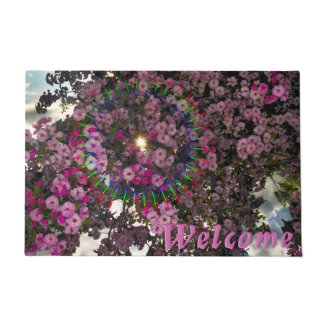skip to main
|
skip to sidebar
 No, not on the quilt. That's already done and currently being judged.
No, not on the quilt. That's already done and currently being judged.
I was in the yard shooting pictures of our tulips when The Lizard popped out to announce, "I need you to make me a snowflake for my bike."
"Poof! You're a snowflake for your bike!" I squealed, wiggling my nose "Bewitched"-style for effect.
I nearly dropped the camera and squished the tulips in my excitement to get back in the house to find out what exactly My Dear Husband had in mind. He wants a crocheted snowflake!!! For his manly man bike!
I've been carrying a lizard or two in my pack or in my commute bag for a couple of years now. So it's only fair The Lizard carry along a snowflake. At least sometimes.
 The Lizard is building a mountain bike from the ground up. He's nearly done. It's almost ready for its inaugural ride.
The Lizard is building a mountain bike from the ground up. He's nearly done. It's almost ready for its inaugural ride.
But it needed just one more thing...
A snowflake!
"It's got this hole in the back of the saddle, where you are supposed to hang a reflector, but I think it needs a snowflake," he said. "Do you have one about this size I can hang there?" He made a circle with his fingers to show me how big a snowflake he wants. About two inches across.
 Just so happens I have a mountain bike-safe one looking for a permanent home. Back in January, I tried out Jelly Yarn for the first time, and it's weatherproof. So I've had my Silverheels Snowflake dangling from my pack ever since.
Just so happens I have a mountain bike-safe one looking for a permanent home. Back in January, I tried out Jelly Yarn for the first time, and it's weatherproof. So I've had my Silverheels Snowflake dangling from my pack ever since.
Silverheels has a clone little sister, also called Silverheels. The younger Silverheels is lighter and more delicate. Within seconds, she was securely attached to The Black Pearl.
"My steed's getting quite the reputation already," The Lizard commented. "A Black Pearl wearing Silverheels. And she hasn't even been out on the trail yet."
 Red rock is calling. And The Black Pearl's ears are duly perked.
Red rock is calling. And The Black Pearl's ears are duly perked.
"You've added weight to my bike, though," The Lizard lovingly growled as I snapped photos. But he couldn't hide his enthusiasm. "Don't you think this black bike would look cool with a bunch of white snowflakes painted down the frame?"
Oh, yes!!!
"But that would void the warranty," The Lizard moaned in second thought.
"Well, wait until the warranty expires, and then you can sand it down and paint it any way you want," I offered.
"It's a lifetime warranty," The Lizard mused. "That's why I bought this bike."
Well, then, I guess Silverheels will just have to suffice. The Lizard will just have to be a One Snowflake Man.




 Spindrift, my entry in the 2011 Denver National Quilt Festival, goes on display this week, so what better time to share how I created this unique piece?
Spindrift, my entry in the 2011 Denver National Quilt Festival, goes on display this week, so what better time to share how I created this unique piece?
(Today's snowflake pattern is at the end of this post.)
Spindrift originally was a sea term, referring to the spray from the tips of ocean waves during a gale. When you live near mountains and there's no ocean for hundreds and hundreds of miles, spindrift is the term for light snow being carried off a mountain by strong wind, often in a spiraling or curling motion.
 The initial inspiration for this quilt erupted in winter of 2009 while we were photographing the setting full moon over Mount Columbia. High winds carried sugary snow on the mountain's summit into a plume seemingly up and around the moon, and I was spellbound!
The initial inspiration for this quilt erupted in winter of 2009 while we were photographing the setting full moon over Mount Columbia. High winds carried sugary snow on the mountain's summit into a plume seemingly up and around the moon, and I was spellbound!
I also have witnessed this phenomena along the edges of Mount Princeton, Mount Evans and Pikes Peak, in Rocky Mountain National Park and while riding up Independence Pass each May before the road opens to vehicles. The swirl of snowflakes dancing in the air was an image I thought could make the most beautiful quilt top.
I started out with roughly 110 crocheted snowflakes last summer, all with size 10 crochet thread and a variety of hooks from size 6 to 11. I crocheted snowflakes with every white shade and fiber I could get my hands on: ecru, ivory, eggshell, white, off-white, antique, natural, cotton, bamboo, etc. I randomly placed the snowflakes on a piece of mottled light gray fabric and took pictures with a digital camera from atop a ladder. I intended to move the snowflakes around so no two shots would be alike, but my studio for this session was my back porch, and wind and rain threatened to scatter my treasures. I rotated, flipped, mirrored and cropped the digital photos in PhotoShop to achieve composition variety. I also lightened my favorite photos by about 30% and saved them as new files.
 Years and years ago, I studied Caryl Bryer Fallert's "Quilt Savvy" to learn to print photos on fabric. Many advances in technology have been made since the book was first published, but the information it contains is still helpful today. Many tutorials from a wide variety of experts also have been made available on the internet. Just do a search for "printing on fabric." Spoonflower and many other commercial fabric printers will print images on fabric if you don't want to do that step yourself.
Years and years ago, I studied Caryl Bryer Fallert's "Quilt Savvy" to learn to print photos on fabric. Many advances in technology have been made since the book was first published, but the information it contains is still helpful today. Many tutorials from a wide variety of experts also have been made available on the internet. Just do a search for "printing on fabric." Spoonflower and many other commercial fabric printers will print images on fabric if you don't want to do that step yourself.
For my own personal taste, I bump up the contrast on photos I intend to print on fabric. Sometimes I increase the saturation, too, but I did not for any of the sheets in this quilt. I select the plain white paper option on the printer, which distributes the most ink I can get. Fabric absorbs ink to a greater degree than paper, so healthy ink portions make for vivid fabric photos.
Using a Canon photo printer that sadly is no longer available, I printed 12 regular exposures and 4 lightened exposures on 8.5x11-inch Miracle Fabric Sheets. Just about any inkjet printer will work with any commercial printable fabric. I think I have tried every brand of commercial printer fabric in the US. My favorite is the fabric I pretreat with Bubble Jet Set 2000 and iron onto freezer paper myself, but I don't usually have time to invest in that step when quilting.
 When making a quilt that will be handled and washed, I post-treat the fabric sheets using Bubble Jet Rinse. This project is a wall quilt and will be subject to minimal handling and will not be laundered, so I did not post-treat it. I always allow my fabric squares to dry and sit for at least 24 hours, 48 if I can.
When making a quilt that will be handled and washed, I post-treat the fabric sheets using Bubble Jet Rinse. This project is a wall quilt and will be subject to minimal handling and will not be laundered, so I did not post-treat it. I always allow my fabric squares to dry and sit for at least 24 hours, 48 if I can.
By machine, I pieced the fabric together, the four lighter panels in the center, framed by a border of darker panels.
I crocheted 15 snowflakes of sock yarn leftovers using my own patterns, most adapted for thicker yarn and larger hook. I used size B and C hooks, depending upon yarn weight. Most snowflake patterns can be worked in yarn of any weight with minor adaptations to maintain flatness and body. If a yarn snowflake curls too much while I'm making it, I will unravel and add or subtract stitches as necessary to get the flake to shape properly.
I hand appliquéd the sock yarn snowflakes to the quilt top using a blind stitch and thread that matched the fabric.
 Initially, I planned to use commercial snowflake fabric for the quilt back, but I was so taken by the fabric I printed, I decided to print more panels and piece the back just like the front. I used snowflake-adapted song titles on my snowflake photos to make the quilt back a work of art all its own, and I made one panel with the information required for most quilt shows: name, address, phone number, quilt title, year made. I printed plain snowflake photos for the top row of the back of the quilt because a sleeve would be stitched across that area as the final step in the quilt. I printed four more sheets of snowflake photos to make the sleeve and set them aside for later.
Initially, I planned to use commercial snowflake fabric for the quilt back, but I was so taken by the fabric I printed, I decided to print more panels and piece the back just like the front. I used snowflake-adapted song titles on my snowflake photos to make the quilt back a work of art all its own, and I made one panel with the information required for most quilt shows: name, address, phone number, quilt title, year made. I printed plain snowflake photos for the top row of the back of the quilt because a sleeve would be stitched across that area as the final step in the quilt. I printed four more sheets of snowflake photos to make the sleeve and set them aside for later.
I sandwiched the pieced back, light quilt batting and the quilt top, then pin-basted the entire quilt. I "drew" wind gusts with my sewing machine (I do not have a quilting machine) and left long thread tails to hand-stitch wind swirls at the end of most of the "gusts." I hand-stitched simple six-pointed snowflakes into the quilt and outlined some of the larger snowflakes in the photographs using a thread that matches the fabric.
 I returned to the computer and added a pastel gradient to one of the lightened photographs, then printed 10 more sheets of fabric, which I sliced into 2.5-inch strips for the binding. I planned to crochet an edging right through the fabric but did not realize the thread count was too tight to stick a hook through until after the binding was finished. In retrospect, if I had known this earlier, I would have machine-stitched along the center of the binding to make the edging easier. After piecing and attaching the binding, I did a running stitch with doubled thread for strength by hand along the entire edge of the binding.
I returned to the computer and added a pastel gradient to one of the lightened photographs, then printed 10 more sheets of fabric, which I sliced into 2.5-inch strips for the binding. I planned to crochet an edging right through the fabric but did not realize the thread count was too tight to stick a hook through until after the binding was finished. In retrospect, if I had known this earlier, I would have machine-stitched along the center of the binding to make the edging easier. After piecing and attaching the binding, I did a running stitch with doubled thread for strength by hand along the entire edge of the binding.
Before the quilt layers were assembled, I'd pondered whether I should use white thread to crochet the edging or a variegated thread. The Lizard and my closest quilting friend Ruthie both insisted color would look better. I selected size 10 crochet cotton in Mist colorway from Sara's Colorwave Yarns because the hues seemed to blend most harmoniously with the subtle, muted grays and greens in my nearly black and white snowflake photos. I bought only one ball of this hand-dyed thread, not knowing if it would be enough to finish the project. Shipping is incredibly fast, so I hoped I would be able to get more if I needed it. As it turned out, I have not quite half a ball left, but I'm now addicted to the colorway, so I may eventually order more anyway!
 The first row of the edging is a basic filet stitch, 1 double crochet/chain 1 all the way around, with two extra repeats (for a total of three) on each corner of each row. On the second row, I maintained the filet pattern but randomly worked snowflake centers every 7-10 double crochet posts on the upwind side of the quilt. On the bottom, I doubled the distance between each snowflake center. On the right side and top of the quilt, I eyeball engineered where I wanted snowflake spikes to fall. On the third row, I maintained the filet pattern but made up snowflake spikes as I went along. Before I ever started this quilt, I knew in my head I wanted a three-point snowflake on the right-hand edge, and the corner flake was the most fun during the edging process because I could already see it in my head before I started, and the final flake looks just the way I pictured it. I worked a simple chain 3 picot on the other three corners.
The first row of the edging is a basic filet stitch, 1 double crochet/chain 1 all the way around, with two extra repeats (for a total of three) on each corner of each row. On the second row, I maintained the filet pattern but randomly worked snowflake centers every 7-10 double crochet posts on the upwind side of the quilt. On the bottom, I doubled the distance between each snowflake center. On the right side and top of the quilt, I eyeball engineered where I wanted snowflake spikes to fall. On the third row, I maintained the filet pattern but made up snowflake spikes as I went along. Before I ever started this quilt, I knew in my head I wanted a three-point snowflake on the right-hand edge, and the corner flake was the most fun during the edging process because I could already see it in my head before I started, and the final flake looks just the way I pictured it. I worked a simple chain 3 picot on the other three corners.
 We had planned to buy a foam core or other suitable surface for pinning at Home Depot or Lowe's when I finished the edging, but I finished the edging at 11:39 p.m. on a work night, and I didn't have the patience to wait for a weekend shopping trip, so I pinned the quilt on my spare bed, with fleece blanket to protect the bed, just in case anything ran after I sprayed water. I allowed the piece to dry for a full 48 hours before removing the pins (which is how I've always shaped my doilies for the last 30 years), then hung the quilt on the wall with two stick pins to make sure everything would hold its shape. It does!
We had planned to buy a foam core or other suitable surface for pinning at Home Depot or Lowe's when I finished the edging, but I finished the edging at 11:39 p.m. on a work night, and I didn't have the patience to wait for a weekend shopping trip, so I pinned the quilt on my spare bed, with fleece blanket to protect the bed, just in case anything ran after I sprayed water. I allowed the piece to dry for a full 48 hours before removing the pins (which is how I've always shaped my doilies for the last 30 years), then hung the quilt on the wall with two stick pins to make sure everything would hold its shape. It does!
I cut and pieced my sleeve fabric, then applied the sleeve to the top of the back of the quilt by hand, then hung the quilt again with two stick pins before transporting it to the Denver National Quilt Festival. When I first began making this quilt, I thought I might be able to sell it to begin a nest egg for a quilting machine. (Because The Lizard wants to learn to quilt, too, but not by hand...) But as with all quilts I've finished except those for charity, I'm too attached, and I have just the perfect spot picked out to hang this baby so I can enjoy it every day.
I have received no perks whatsoever for using any of the products in this quilt. Brand names mentioned are what I chose to use, and I received no compensation or discounts for my choices or for anything named in this post.

I did not notice until I began editing these photos that the colored binding did in fact run in three places, adjacent to the three largest partial snowflakes. I sprayed too much water on those sections. I've learned two very important lessons. First, always post treat printed fabric, even if I think it's not going to be washed. Second, go easy on the water when spraying a crocheted edging!
When I first discovered the three spots, I was devastated because it's too late to do anything about the imperfections. But desperation, as they say, is the mother of all creativity. I sprayed those three areas again and intentionally smeared the runs with my thumbs, blending the stains in so there is no longer a defined run line. I know it's there, but the judges may not catch it. And even if they do, I still love my Spindrift quilt.
The partial snowflake above is one of my favorites on the quilt, so I created a whole snowflake to correspond to it, and I used the same thread. Because the idea came from the quilt edging, I'm calling this snowflake Spindrift I. Yes, that means I may make a few more whole snowflakes inspired by the edging. Might just have to make a whole set in the same thread to hang right alongside the quilt!
And here's a nice little piece of trivia. This is the 99th snowflake pattern I've written. Not all 99 have been published yet; I'm trying to stock up again for cycling season. But the next one I write will be my centennial or century flake!!!
You may do whatever you'd like with snowflakes you make from this pattern, but you may not sell or republish the pattern. Thanks, and enjoy!

Finished Size: 7.5 inches from point to point
Materials: Size 10 crochet thread, size 8 crochet hook, empty pizza box, wax paper or plastic wrap, cellophane tape, glue, water, glitter, small container for glue/water mixture, paintbrush, stick pins that won't be used later for sewing, clear thread or fishing line
Spindrift Snowflake Instructions
Make magic ring.
Round 1: 12 sc in ring; sl st in starting sc. Don't pull magic ring too tight.
If you're not reading this pattern on Snowcatcher, you're not reading the designer's blog. Please go here to see the original.
Round 2: 1 sc in same sc as sl st; *ch 5, sk 1 sc, 1 sc in next sc; repeat from * around 4 times; ch 2, 1 dc in starting sc (ch 2 and 1 dc counts as final ch 5).
Round 3: 1 sc around post of last dc of Round 2, * ch 8, 1 sc in next ch 5 sp; repeat from * around 4 times; ch 4, 1 tr in starting sc (ch 4 and 1 tr counts as final ch 8).
Round 4: 1 sc over tr just worked, ch 12, * 1 sc in next ch 8 sp, ch 12; repeat from * around 4 times; sl st in starting sc.
Round 5: *In next ch 12 sp, work 3 sc, 3 hdc, 3 dc, 3 hdc, 3 sc; repeat from * around 5 times; sl st in starting sc.
Round 6: 1 sc in same st as sl st, *ch 3, sk next 2 st, 1 hdc in next st, ch 3, sk 1 st, 1 dc in next st, ch 3, sk 1 st, 1 tr in next st, ch 3, 1 tr in same st, ch 3, sk next st, 1 dc in next st, ch 3, sk next st, 1 hdc in next st, ch 3, sk next 2 st, 1 sc in next st, 1 sc in next st; repeat from * around 5 times, omitting last sc on final repeat; no sl st to end this round.
Round 7: *2 sc in next ch 3 sp, 2 sc in next ch 3 sp, ch 3, 2 sc in same sp, 2 sc in next ch 3 sp, ch 3, 2 sc in same sp, 1 sc in next ch 3 sp, 1 hdc in same sp, 1 dc in same sp, ch 3, 2 dc in 3rd ch from hook, ch 5, 1 sc in 5th ch from hook, ch 6, sl st in sc, ch 4, sl st in sc, ch 3, 2 dc in 3rd ch from hook, 1 dc in same ch 3 sp, 1 hdc in same sp, 1 sc in same sp, 2 sc in next ch 3 sp, ch 3, 2 sc in same sp, 2 sc in next ch 3 sp, ch 3, 2 sc in same sp, 2 sc in next ch 3 sp; repeat from * around 5 times; sl st in starting sc; bind off. Weave in ends.
Finish: Tape wax paper or plastic wrap to top of empty pizza box. Pin snowflake to box on top of wax paper or plastic wrap.
Mix a few drops of water with a teaspoon of glue in small washable container. Paint snowflake with glue mixture. Sprinkle lightly with glitter. Wash paintbrush and container thoroughly. Allow snowflake to dry at least 24 hours. Remove pins. Gently peel snowflake from wax paper or plastic wrap. Attach 10-inch clear thread to one spoke, weaving in end. Wrap fishing line around tree branch (or tape to ceiling or any overhead surface) and watch the snowflake twirl freely whenever you walk by! Snowflake also may be taped to window or tied to doorknob or cabinet handle.

 When I first moved to Colorado in 1988, my dad informed me I would keep a first aid kit, tow kit and emergency rations in my car at all times. A blanket, pillow, a week's worth of water (which would have to be changed out once in a while so as not to go stagnant), two days' worth of nonperishable food, flashlight, fresh batteries (which also would have to be updated on a regular basis), shovel, toothbrush and toothpaste (yes, for real), fire-starting materials, a warm coat, hat and gloves, and a change of clothes.
When I first moved to Colorado in 1988, my dad informed me I would keep a first aid kit, tow kit and emergency rations in my car at all times. A blanket, pillow, a week's worth of water (which would have to be changed out once in a while so as not to go stagnant), two days' worth of nonperishable food, flashlight, fresh batteries (which also would have to be updated on a regular basis), shovel, toothbrush and toothpaste (yes, for real), fire-starting materials, a warm coat, hat and gloves, and a change of clothes.
I was not a little girl anymore, but I knew my dad had seen his share of tragedies, having worked closely with law enforcement on every government level throughout my entire childhood.
Little did he or I know all those years ago I wouldn't be putting Dad's ER kit into action after running off the side of a road in the middle of winter, but in church on a springy Sunday morning...
 I was to be the soprano in a ladies' trio performing "The Lord is My Shepherd" to set the mood for the upcoming Holy Week. Bright and early Palm Sunday, one of our altos had an emergency and would not be able to attend. The second alto had to learn the first alto part half an hour before church began.
I was to be the soprano in a ladies' trio performing "The Lord is My Shepherd" to set the mood for the upcoming Holy Week. Bright and early Palm Sunday, one of our altos had an emergency and would not be able to attend. The second alto had to learn the first alto part half an hour before church began.
Needless to say, the two of us were bursting at the seams with nervousness.
Literally.
I took my seat at the back of the church after our impromptu practice. The budget-priced zipper on the back of my 18-year-old handmade dress picked that exact moment to give up the ghost. Top to bottom. All 22 inches.
The Lizard later said he wished he could have caught the look on my face on camera. However, being the marvelous reptile he is, he scurried without question to the car to see if it contained anything that might cover the unsightly.
While he was gone, which seemed like years, I tried not to move, thanking my lucky stars I'd chosen to sit at the back of the church, where no one could see the back of me, as I studied each woman who entered the chapel. Rose was wearing a sweater! Liz was wearing a sweater! Veronica was wearing a sweater!
So if The Lizard's scavenger hunt proved fruitless, I could send him to borrow a sweater. My friends would rally around me. They might laugh, but they would graciously respond to my need.
 Moments later The Lizard returned, loud, obnoxious, totally unchurchy fleece in hand, but the nearly fluorescent lime green and purple hoodie would do the trick. I'd look like an Easter egg, but all parts of me would be decently covered.
Moments later The Lizard returned, loud, obnoxious, totally unchurchy fleece in hand, but the nearly fluorescent lime green and purple hoodie would do the trick. I'd look like an Easter egg, but all parts of me would be decently covered.
"Don't you keep a spare dress in the car somewhere?" he asked as he helped me slide the warm, hot, sizzling, scorching, blistering and unseasonal extra layer over my head.
Um, yes, I did. But then cycling season ended. I didn't need the emergency two-piece set in the car anymore. Or so I thought. The blouse needed laundering, and the skirt soon lost its waistband, yet another of Life's Most Embarrassing Moments. But I did keep fleece in the car. Colorado weather can change without notice. Zippers can give out without warning. Fleece can be such a handy item.
As I sat sweating as much from the fear of singing in front of a congregation as from wearing winter fleece on the first tropical and humid Sunday of the year, I wondered if this could have happened at a worse time.
Well, yes, it could have. It could have happened while I was at the microphone. Just how hard would it have been to hit those high notes then?!?
Fleece is highly efficient at wicking moisture away from the body without making the wearer look as though she is a bundle of nerves. That fleece was the perfect camouflage for the balls of sweat furiously painting my underarms.
I survived the duo. That one-time Easter dress likely will find its way into the quilt stash, even though I am fully capable of replacing a zipper. It just doesn't go with my bright and obnoxious emergency fleece.



 Moments later The Lizard returned, loud, obnoxious, totally unchurchy fleece in hand, but the nearly fluorescent lime green and purple hoodie would do the trick. I'd look like an Easter egg, but all parts of me would be decently covered.
Moments later The Lizard returned, loud, obnoxious, totally unchurchy fleece in hand, but the nearly fluorescent lime green and purple hoodie would do the trick. I'd look like an Easter egg, but all parts of me would be decently covered.




